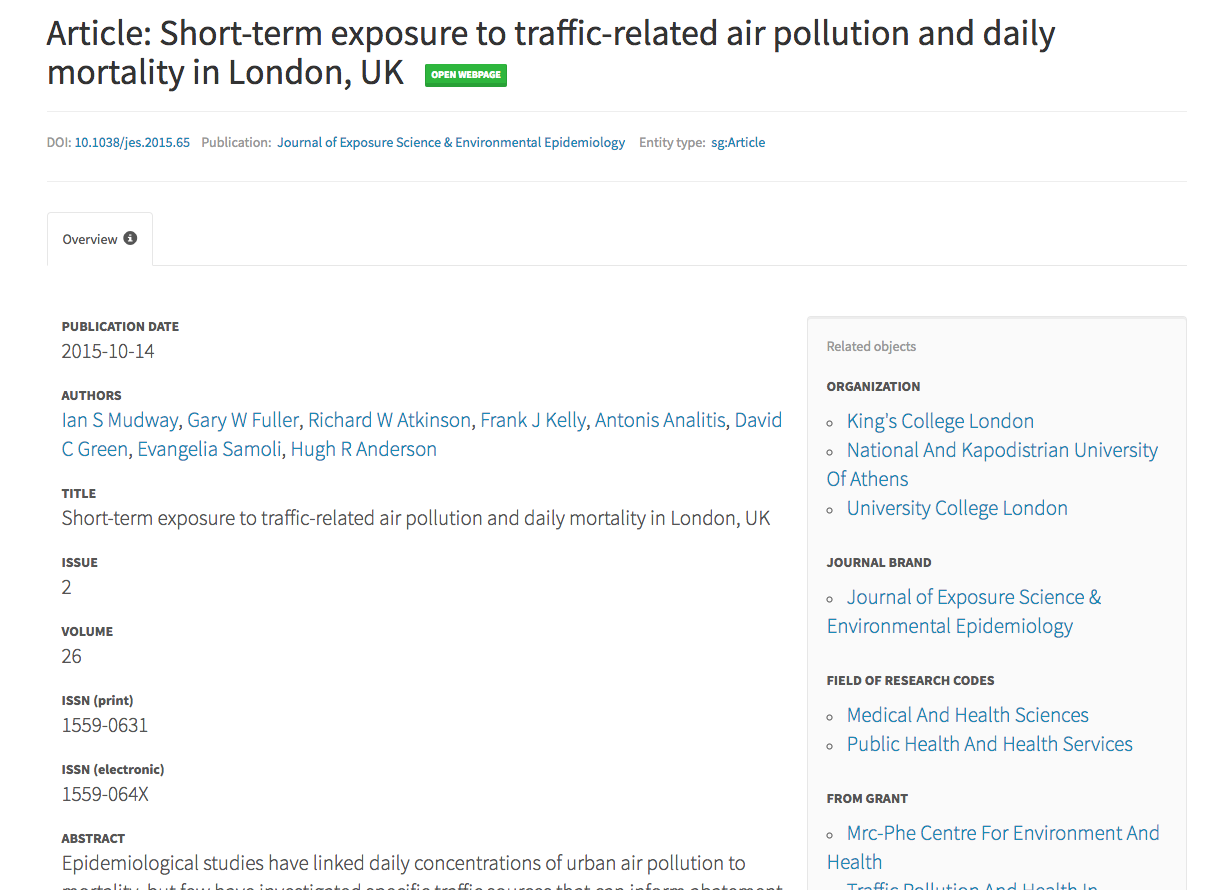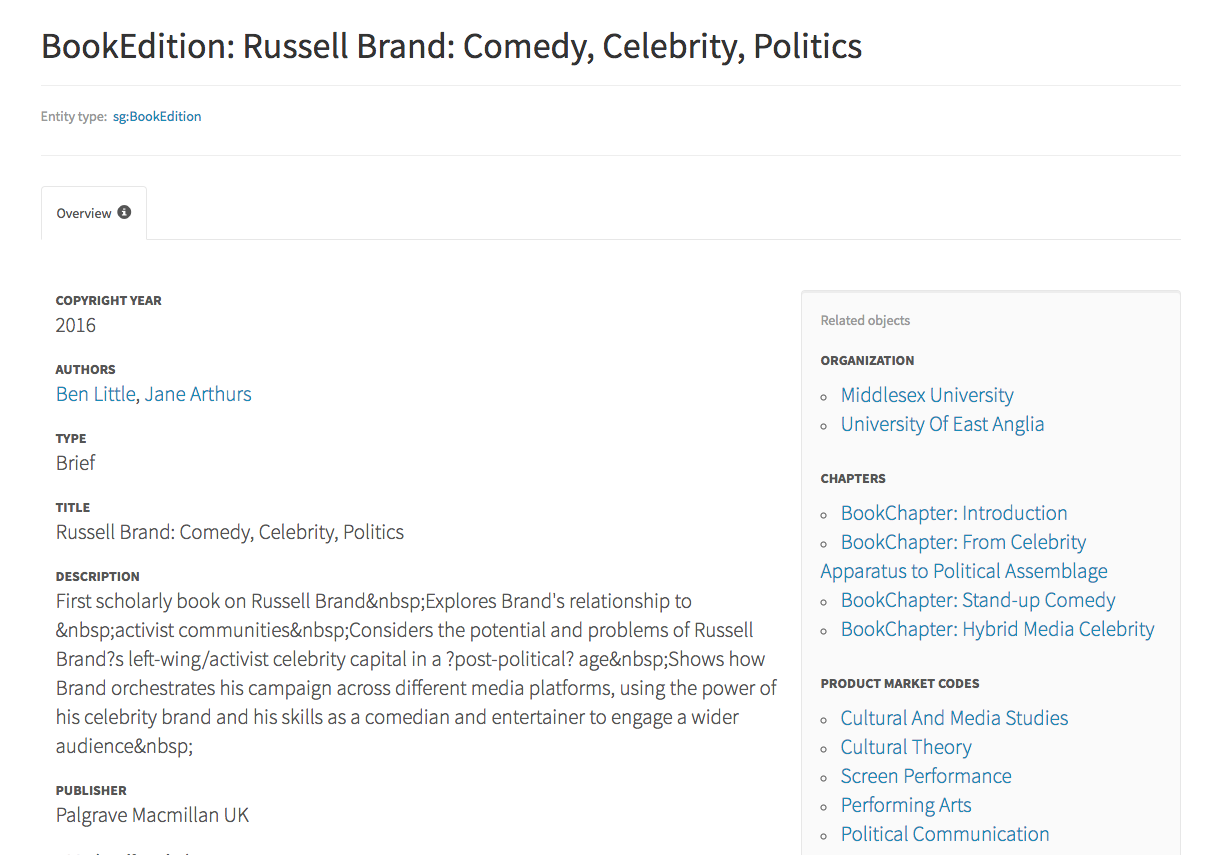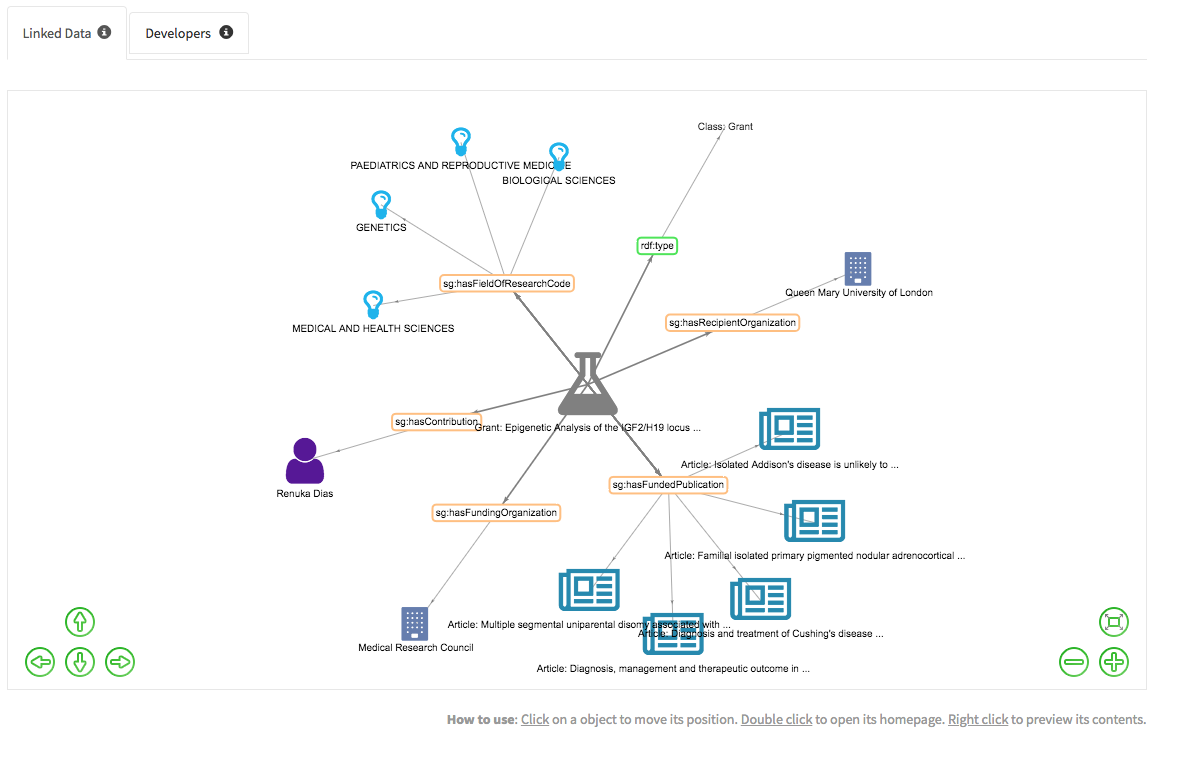SN SciGraph: more related objects links increase discoverability of content
The latest release of SN SciGraph Explorer includes a number of new features that make it easier to navigate the scholarly knowledge graph and discover items of interest.
Graphs are essentially composed by two kinds of objects: nodes and edges. Nodes are like the stations in a train map, while edges are the links that connect the different stations. Of course, one wants to be able to move from station to station in any direction! Similarly in a graph one wants to be able to jump back and forth from node to node using any of the links provided. That's the beauty of it!
What is SN SciGraph? SciGraph is the Springer Nature Linked Data platform that collates information from across the research landscape, i.e. the things, documents, people, places and relations of importance to the science and scholarly domain. Metadata for millions of entities are available to explore, as well as for downloading to reuse within your own application under a CC-BY and CC-BY-NC licenses.
Although the underlying data allowed for this sort of navigation, the SN SciGraph Explorer website wasn't fully supporting it. So we've recenlty started to add a number of 'related objects' sections that reveal these pathways more clearly.
For example, now it's much easier to get to the organizations and grants an article relates to:
Or, for a book edition, to see its chapters and related organizations:
And much more.. Take a look at the site yourself to find out.
Finally, we improved the linked data visualization included in every page by adding distinctive icons to each object type - so to make it easier to understand the immediate network of an object at a glance. E.g. see this grant:
SN SciGraph is primarily about opening up new opportunities for open data and metadata enthusiasts who want to do more things with our content, so we hope that these additions will make discovering data items easier and more fun.
Any comments? We'd love to hear from you. Otherwise, thanks for reading and stay tuned for more updates.
PS: this blog was posted on the SN Research Data space too.
Cite this blog post:
Comments via Github:
See also:
2018
2014
International Semantic Web Conference (ISWC-14), Riva del Garda, Italy, Oct 2014.
2012
NeDiMaH workshop on ontology based annotation, held in conjunction with Digital Humanities 2012, Hamburg, Germany, Jul 2012.
2010
2009
2008
paper Formalizing ʻphilosophicalʼ narratives: the tension between form and content
European Computing and Philosophy Conference (ECAP08), Montpellier, France, Jun 2008.


